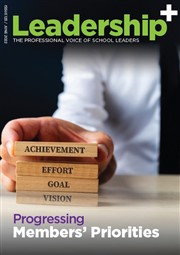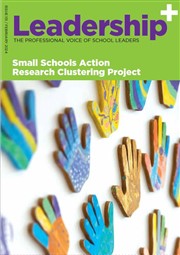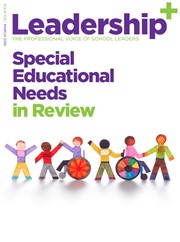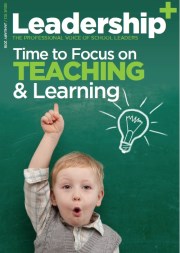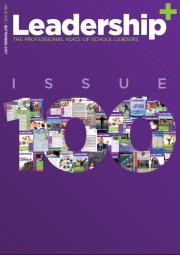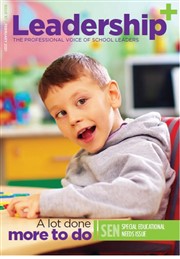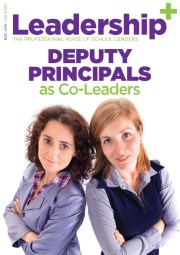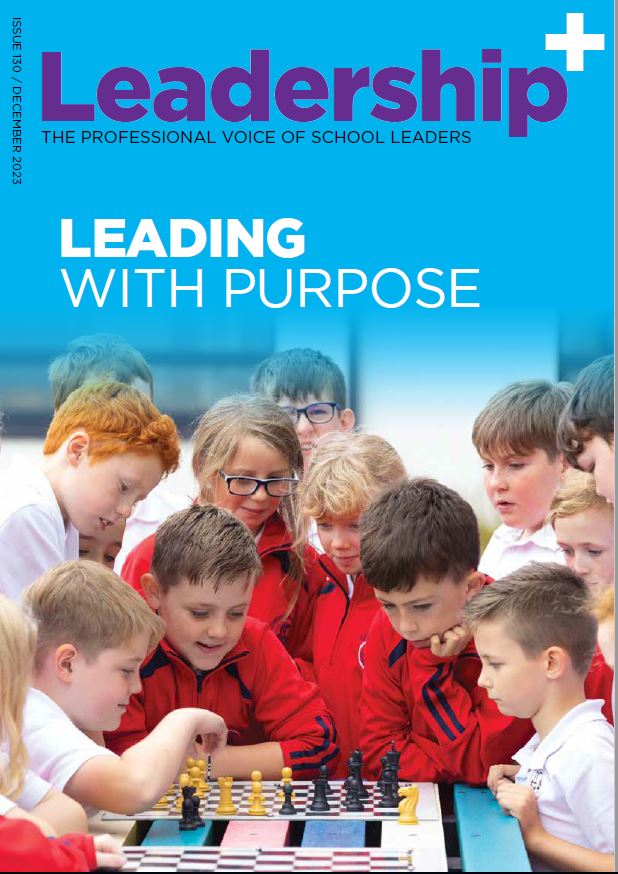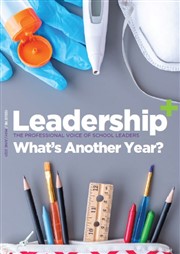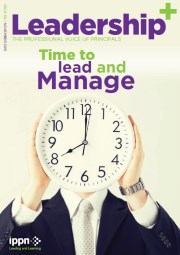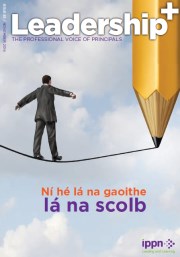Strapped Schools May Boost Class Sizes
- Published: 12 December 2008
Source : Washington Post (USA)
Proposals Buck Recent PhilosophyBy Maria Glod
Washington Post Staff Writer
Friday, December 5, 2008; Page A01
Worsening budget conditions are pressing school officials in the Washington area and across the country to consider backing away from what has become a mantra of education: Kids learn best in smaller classes.
Area school systems are moving into the difficult part of their budget seasons, and many of them say that trimming spending by increasing class size is a real possibility.
Montgomery County seems to have avoided the prospect this week, when teachers agreed to give up a 5 percent raise to help the school system save tens of millions of dollars. But the size of the raise in that contract was unusual. Elsewhere, school officials say they will have to get by with fewer teachers to find such savings.
In Fairfax County, the region's other premier public school system, bleak fiscal forecasts point to a potential increase of as many as 2 1/2 children a class next school year, a bump of more than 10 percent in elementary classrooms. That would come on top of a half-student per class increase in September. Larger classes are also being considered in Loudoun and Prince George's counties.
"You go to it as the last resort," Fairfax Superintendent Jack D. Dale said. "Class size matters. As a teacher, you end up using the same amount of time with more kids, and kids lose." Dale, who is also pondering a scenario without teacher raises, expects to present his budget next month as administrators regionwide confront hard fiscal choices.
If dire predictions hold true for the highly regarded Fairfax system, students at Spring Hill Elementary in McLean could have four or five fewer teachers next year than the roster of 59, and one assistant principal instead of two, said Principal Roger Vanderhye.
But the climb in class sizes means more than a few additional classmates. Spring Hill would continue to have art, music and physical education classes, but some or all of those subjects' teachers would spend less time in the school, Vanderhye said. Hands-on science experiments would be conducted less often because the school's science specialist would become a regular classroom teacher. Some classes, especially those with older children, would be a little cramped.
"We'd be starting the year with at least 30 students in most classes," Vanderhye said. "Thirty is the absolute tipping point because then, instead of facilitating learning, you are managing learning. We just know that it is going to be very difficult to deliver the same level of services that our parents demand and our children deserve."
For more than a decade, billions in federal and state dollars were targeted to whittle classes so that teachers can devote more time and attention to each student, crafting lessons to fit the needs of struggling students, high-achievers and everyone in between. Nationwide, the average number of students in elementary classes dropped from 29 in 1961 to 24 in 1996, according to the National Education Association. In 2004, the average elementary class nationwide had 20 children, the U.S. Education Department says, with about 25 in the average secondary class.
But this smaller-is-better trend is in jeopardy. A survey of more than 800 districts released last month by the American Association of School Administrators found that 36 percent have moved to larger classes in response to the economic downturn. Many are also putting off maintenance, buying fewer textbooks and lowering thermostats.
With upwards of 80 percent of a system's budget devoted to salaries and benefits, hiring fewer employees offers one of the surest ways for schools to net big savings. (Another is reducing pay raises.) In Fairfax, each time average class size grows by one student, the system saves $22 million a year. In Loudoun, the per-student savings for larger classes would be $7.3 million a year.
Research has shown that the smallest class sizes, those hovering around 15 or 16 children, benefit students. For instance, researchers studying 15-student elementary classes in Wisconsin reported in a 2003 study that those students made greater academic gains than peers in bigger classes. Teachers were better able to tailor lessons to each student, and fewer discipline problems occurred.
But a group that intimate is unusual. Arizona State University professor Alex Molnar, one of the study's authors, said there's not a clear definition of when a class becomes too big. "People say, 'What's the magic number?' " Molnar said. "Every child added or subtracted has a measurable effect on achievement. It's a little bit like saying: 'Is this the straw that will break the camel's back? Is this the straw? Can you take just one more straw?' "
Douglas D. Ready, assistant professor at Teachers College at Columbia University, said small classes alone aren't enough. Schools must consider teacher quality, curriculum choices, instructional techniques and resources for students with special needs, he said.
Laura Douglas, whose daughter Cassidy is a third-grader at Fairfax's Gunston Elementary School, said she understands that the tight budget will force difficult choices. Still, she worries that if classes grow too large, attention from teachers and time for lessons will decrease.
"Teachers work very hard with positive reinforcement, and to do that, it takes time and keeping an eye on the kids. When you increase class size, you tend to let things like that fall through the cracks," Douglas said. "It's going to take longer for them to take bathroom breaks. It's going to take longer to get in line and learn the instructions. There's less time to do things. I feel like we would harvest out a whole bunch more average kids or just-getting-by kids instead of pushing them."
Last school year, average elementary class size was 19.3 students in Prince George's, 19.5 in Montgomery, 20.7 in Fairfax and 21.2 in Loudoun, according to the Washington Area Boards of Education. In the District, the contract with the Washington Teachers' Union calls for no more than 25 students per elementary class, but that target is not always met.
Prince William school officials plan to ask state lawmakers to relax Virginia's class-size rules, which stipulate that in first, second and third grades, each class should typically have 24 students but no more than 30.
Former Prince George's superintendent John E. Deasy, who has moved to an education post with the Bill & Melinda Gates Foundation, said the system might be better off raising class size slightly if that frees money to preserve special programs, including those for struggling students and bright students. "You are going to have trade-offs," he said. "In a situation of this magnitude everything is going to have to be looked at, and class size is one of them."
School leaders nationwide are considering similar moves. Los Angeles officials are proposing to raise the limit on class size from kindergarten through third grade by five students, to 25 a class. Georgia Gov. Sonny Perdue (R) is urging state officials to give schools flexibility about class-size rules.
American Federation of Teachers President Randi Weingarten said last month that anxiety is rising among educators -- "the fear that budget cutbacks will increase class sizes to unmanageable levels, put the brakes on initiatives that are improving their schools."
Theresa West, principal of McNair Elementary in Herndon, said the school, which has 89 teachers, could lose as many as 10 staff members, including six teachers, instructional assistants and an assistant principal. Having fewer teachers not only means larger class sizes, she said, but it also means fewer opportunities to gather groups of teachers to plan lessons.
"I'm going to be asking the teachers to do more with less. You're not going to be able to plan together. You might have a few more students in your class," West said. "Whatever we do we will make it work, but it has huge repercussions."
Staff writers Daniel de Vise and Bill Turque contributed to this report.
100,000 miss 20 school days a year
- Published: 11 December 2008
Source : RTÉ
In these areas, a significant number of schools report that one in five children are frequently absent.
Overall 10% of primary school children are missing more than 20 days at school each year.
The figure rises to 17% of students at second level.
Back-to-school shock as costs to rise €1,500 -- TUI
- Published: 09 December 2008
Source : Irish Independent
By John Walshe Education EditorTuesday December 09 2008
The middle classes will be squeezed badly when they send their children back to school or college next year, facing additional costs of around €1,500 per family of four children.
And the final figure could be even higher if schools ask them for extra 'voluntary' contributions to make up shortfalls in state aid, it was claimed last night.
An extensive survey carried out by the Teachers' Union of Ireland suggests parents may not be fully aware of the true extent of the additional costs they will bear.
"Many parents will have to budget for increased costs for school books, examinations fees, transport costs in rural areas and registration fees at third level. If post-primary schools decide to levy parents to maintain the current suite of programmes and activities this will add to the financial burden of families at a time when many will be facing unemployment," said union general secretary Peter MacMenamin.
The survey gives examples including a family of four children, living in a rural area and which is ineligible for either a medical card or third-level grant.
Even though there is no plan to introduce tuition fees next year, registration charges will go up by €600 per student.
If there are two children in second-level school, they will have to pay an extra €198 per year, while the withdrawal of book grants in many schools will mean an additional €300 and the ending of various programme grants will mean a further €100 payment.
The survey of 114 post-primary schools shows that the €14 increase in the capitation grant per pupil will not make up for the withdrawal of a number of other grants such as the physics and chemistry grant as well as the school-book grant and others to schools not specified as disadvantaged.
The average loss per school will be €30,000 or almost €2m in the schools surveyed.
The TUI survey predicts a loss of 239 teachers in the 114 schools. This will arise from the change in the pupil teacher ratio, the re-imposition of the cap of two language-support teachers and the withdrawal of posts provided to address educational disadvantage.
"It is misleading for the minister and others to cajole public support for this measure by suggesting that it will simply lead to 'one extra student in a class' and it is 'temporary'," says the study.
- John Walshe Education Editor
Union: Schools at risk of losing €20k each
- Published: 09 December 2008
Source : Irish Examiner
By Niall Murray, Education CorrespondentTHE average, second-level school could lose up to €20,000 in grants under education cutbacks in next year's budget, the Teachers Union of Ireland (TUI) has warned.
Its figures are based on a survey of 114 schools in cities, towns and rural areas, which the union said are set to lose 239 teachers.
The survey showed an average of four teaching jobs will be lost at schools affected by a number of budget measures, including changes to general staffing levels, a restriction on language support teacher numbers and the withdrawal of additional posts for schools previously classed as disadvantaged.
For schools in the vocational sector, where most TUI members work, Education Minister Batt O'Keeffe has approved an increase of €14 for general running costs for every student. This amounts to €5,600 for a 400-student school but the TUI said it could lose substantially more than €20,000 in other grants and funding for programmes which is being withdrawn.
These include the €100 given to schools for every transition-year student, the funding given to schools to help poorer families with the costs of school books and reductions in funding given to schools catering for Traveller students.
It also includes a grant worth €159 for every student taking part in the Leaving Certificate Applied programme — more prevalent among students from disadvantaged backgrounds.
The survey showed that the total loss to the 114 schools was just under €2 million, but a school affected by all the measures could be short an average of more than €29,000 next year.
"The 2009 budget gives more to schools serving families and communities from middle and high income groups, while robbing schools that serve low to middle-income groupings," said TUI education and research office Bernie Judge.
The Irish Vocational Education Association (IVEA) yesterday called for all education partners, including unions, management bodies, parent organisations and the Department of Education to end the "megaphone diplomacy".
They asked for engagement in real discussions to find savings elsewhere that might help some of the cutbacks to be avoided.
The IVEA and other second-level management bodies reached agreement with Mr O'Keeffe on savings of €16m in the supervision and substitution scheme, which along with €2.7m from the department, will allow an easing of the restriction on substitution cover for absent teachers for the remainder of the school year.
Call for quality early education system
- Published: 09 December 2008
Source : Irish Times
THE GOVERNMENT has been urged at a conference in Co Kerry not to row back on the gains made in early childhood education.
"Despite our reputation as caring and family-oriented, in actual fact up to recently we gravely neglected young children and their development," said Prof John Coolahan, professor of education at NUI Maynooth, and an international expert in the field.
Up to the mid-1960s, one-third of all children finished their education at primary school level, he told the conference of childcare workers and educators organised by the South Kerry Development Partnership in Killarney.
It was only in the late 1990s following Ireland's ratification of the UN Convention on Children's Rights that attitudes towards the education of the very young began to change, said Prof Coolahan.
Over the past eight years there was plenty of research and a build-up of a strong policy and vision for the education of the very young, but there had been very little implementation.
"There has been a paradigm shift in our national attitude towards the education of our very young children. There are gaps, as has been outlined, but we have now a whole range of quality reports as good as anything across the world. The problem is implementation," Prof Coolahan said.
Political and social will was needed to put in place a quality early childhood system of education. One of the biggest gaps right now was between "the formal system" of the primary school and the various agencies such as parents' groups, the HSE, county committees on childcare and so on. These were simply not coming together, he said.
Despite the economic downturn, "we cannot go back", Prof Coolahan said. He severely criticised the recent Budget decision to close the Centre for Early Childhood Care and Development at St Patrick's College, Drumcondra.
A joint venture between the Dublin Institute of Technology and St Patrick's, the centre - costing €1 million a year - had gained an international reputation and great credibility among educators here. "This is a severe blow to us. It's an extraordinary, uneconomic thing to do," Prof Coolahan said.
© 2008 The Irish Times






